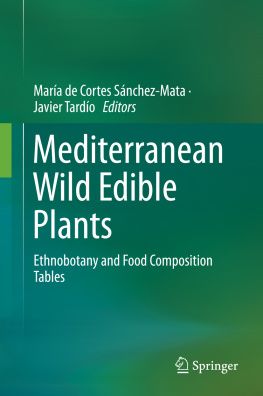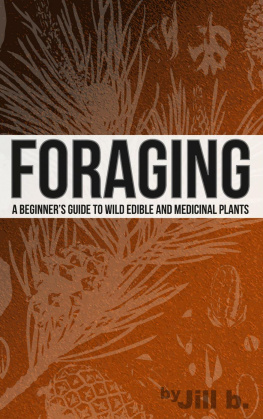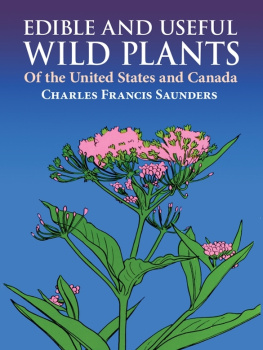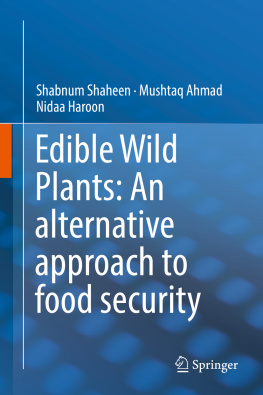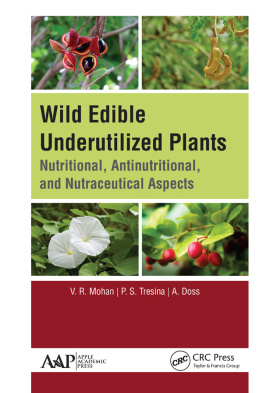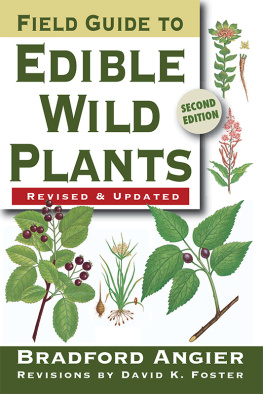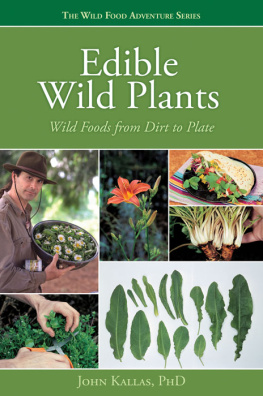1. A Historical Perspective of Wild Plant Foods in the Mediterranean Area
1.1 Introduction
The human feeding process has experienced constant evolution through history. The first human beings were able to intuitively select from the environment products that could be used for food, preferring those which provided energy and nutrients and rejecting what they thought could be harmful. With the aim of satisfying the most basic need (hunger), they tried to use different natural products for food; later, in times of abundance, they could make a selection, and finally they learnt how to cook, preserve and produce food products (Toussaint-Samat ).
The human being is a selective omnivore, which means that his nutrition is not linked to one or several foods. His food habits allow him to choose between food from different origins and even between different varieties of a given food. The primitive food behaviour was influenced exclusively by natural appetite. Whether a certain kind of food is accepted or not depends first on whether a society considers it edible. Then, its acceptance depends on the sensorial exigencies, such as external aspect, odour, taste, flavour, texture and even the noise produced when it is consumed. The consequences derived from that selection are mostly biological since foods provide energy, nutrients and other compounds for human organism. A right selection may have good consequences on health status, while a wrong choice may give rise to diseases; this has been sometimes empirically taken into account during the evolution of human beings to influence the acquisition of food habits. However, sociocultural factors have also produced changes in food behaviour since feeding is influenced by different individual or collective facts such as culture, economy, geography and environment, as well as physiology and personal psychology (Harris ).
From ancient times, humans took from the surrounding environment those products that could be used as food. Plant products known by primitive people were used with different objectives: food, medicine, production of materials (for example clothes) or magic rituals. Wild plant gathering has been a habitual practice since ancient times all over the world, especially in times of famine. Many species now considered as weeds were food for numerous cultures. Today, lots of them have been forgotten in our society even though they have an important nutritive value; in other countries, however, many plant species are still in use.
Phytogenetic resources are essential to improve food security, including seeds and propagation materials from traditional and modern varieties, and also wild species, which are often used as food. The loss of these resources and the absence of suitable links between preservation and utilization are an important danger for food security in the future world. Despite their importance for human survival, plant biodiversity is being lost at an alarming rate. Hundreds of thousands of traditional heterogeneous varieties existing through generations in the fields until the beginning of the twentieth century have been replaced by a small number of commercial modern varieties (Esquinas-Alczar ).
For this reason, the Food and Agriculture Organization of the United Nations and the World Health Organization (FAO/WHO) are devoted to improve the knowledge and preservation of phytogenetic resources, with the aim to assure sustainable food provision in the future and contribute to the optimal utilization of the available genetic resources, including wild plants which may be relatives of crop products, but may contain different genetic material allowing them to live in stress conditions or providing a higher nutritive value. In the past years, the importance of biodiversity has stood out in many campaigns, such as the FAO/WHO World Food Day, with the topic Harvesting Natures Diversity in 1993 or Biodiversity for Food Security in 2004 (FAO ).
The wild flora has played an essential role in human feeding, and even nowadays, there are groups depending at a high rate on wild edible plants. In our environment, wild plants have been and are a seasonal complement for our diet, although in times of famine, they have been employed as emergency foods. The most valued species are even subjects of seasonal commerce, usually as consumer products and often in ambulant markets and are also present in some compilations of traditional food recipes.
1.2 Prehistory
The interpretation of the archaeological remains is not an easy task; however, the role of wild plants in the diet of communities during prehistory is supposed to be highly important. Wild plants are abundant resources, easily gathered and collected, which was the reason that, for example, young parts of Malva parviflora L., Rumex sp., Silene sp., Sisymbrium sp., Plantago sp. or Calendula sp. could be used as habitual foods by primitive civilizations (Pea Chocarro ).
The adventitious species linked to fields, as well as ruderal species developed in some spaces modified by human beings, were used in the Neolithic period, such as Plantago sp., Chenopodium sp., Amaranthus sp., Polygonum sp. as well as some grains of wild species. Precioso-Arvalo () mentioned plants which have been found in palaeobotanical remains belonging to the genus Silene, Chenopodium or Brassica, as well as Calendula arvensis M. Bieb. and Chenopodium album in several archaeological sites in the East of Spain.
1.3 Ancient Civilizations
There are not only many evidences about cereal and legume crops in ancient Near Orient cultures but also of the gathering of nuts such as acorns, pistachios and almonds (Redman ).
In Egypt, many vegetables were highly valuable, such as garlic, onion, mint, caraway, fennel or coriander, firstly as wild herbs, but later as cultivated plants. Other vegetables with a double ornamental and food use were lotus and water lily, which became important for Egyptian food habits (Martnez Llopis ; Aboelsoud 2010).
Many of the most used plants are mentioned in Ebers Papyrus (sixteenth century BC), one of the most ancient maintained medical documents, compiling about 700 remedies, not only explaining their medicinal applications but also some of their food uses. In this document, reference to lotus appears together with other vegetables such as onions, dates, pomegranates, poppy, elderberry or mint. Lotus, an aquatic plant of the Nymphaeaceae family known as Egyptian white nenuphar or Egyptian white lotus, was a symbol of water and origin of life, as its seeds and tubers were consumed as food in this culture (Aboelsoud ).
Vegetables were basic components of the Greek diet from ancient times, as shown in different references from ancient Greek literature. For example, Hesiod (eighth century BC) in his manuscript Works and Days referred again to lotus, adding also what a rich treasure is given by asphodel and mallow (Vianello de Crdova ).
Antiphanes (408334 BC) wrote about people eating leaves ( phyllotrges ), either wild or cultivated; some comments illustrate how they used to be the main dish of the meal, being consumed either raw or cooked, and also accompanying other foods such as meat or fish, according to Garca Soler . This author also indicated that the roots and stems of mallows ( malche ) were eaten either cooked alone or as an ingredient of other dishes.

